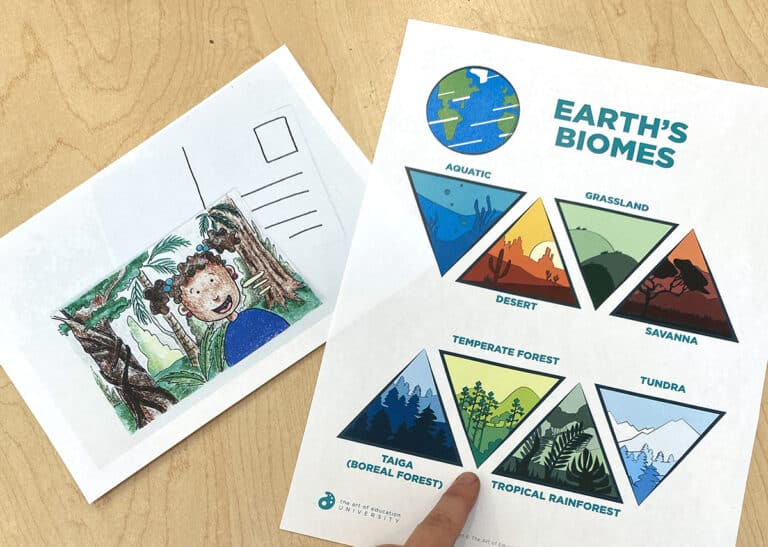Art teachers would like to think that all students that register for their classes are destined for Art College and beyond. In reality, we know this is not the case. High school students find themselves taking art for several different reasons. Many sign up because they have an interest in art. Others think art is a great way to earn an easy “A”. Still others know it looks good on a college application. Of course, there is another group who end up in our art rooms because, frankly, the counselor has no other place to put them.
There are so many different reasons why students take art. How should we then, as art teachers, view the class as a whole? What framework should we work with to ensure all these beginning students are getting what they need?
In other words, what is the purpose of Art One?
I decided to ask two groups of people this very question.
Though not a scientific poll, I did gather information from several places to create the following list. The reasons cited are listed in order from most often given to least often given. The first group I asked was composed of art teachers. The second group of responses were given by art students. The difference in opinion may surprise you.
The Teacher’s View
#1. To Learn the Elements and Principles of Art
The primary purpose of Art One, according to the responses I received from art teachers, is for students to learn the basics, the E’s and P’s, often starting with drawing. Primarily, Art One was described as a fundamentals course that teaches a wide variety of media, as well as classroom expectations.
#2. To Gain Required Credit
The second most popular answer, according to teachers, is pragmatic in nature. Either the teacher, the counselor or the student recognizes the need for the student to take art, primarily as a required credit.
#3. To Encourage a Passion for the Arts
The third most popular response was dedicated to the enjoyment of art. These teachers recognize the value of creating a likable learning environment in hopes that their students will leave with good memories. The desired outcome is that their students develop a passion for the arts.
#4. To Weed Students Out
A very small fraction of art teachers described Art One as a place to weed out those students who should not move on to upper level classes.
The Student’s View
#1. To Decide if They Like Art
The overwhelming majority of students who responded to the survey stated that the purpose of Art One is to help them decide if they like art. They see it as a safe place to determine if art is something they will find interesting.
#2. To Find Encouragement
The second most popular answer mirrors the teachers’ #3 response, that Art One should be a place that encourages creation. However, art students differed slightly from art teachers describing Art One as a place to sample different kinds of materials and also as a place that will encourage students to try their best at whatever they want to do.
#3. To Gain an Easy Credit
Yes, students do see art as an easy credit. However, they see it as an easy credit for both art enthusiasts as well as the non-art peeps. In their words, it’s a place for all students to succeed.
#4. To Learn Techniques
Surprisingly, the students’ least cited purpose was learning techniques. Furthermore, it came with a warning. The reason for learning new skills should be that this knowledge can be used to further the students’ ideas. Perhaps the best way for me to demonstrate what the students were trying to say is by providing a direct quote.
“Definitely learning “techniques,” by which I mean different mediums, whether it be sampling in textiles, clay, metals, found objects, drawing with whatever you can find. BUT I think these ideas should be nudged at instead of something like, making a color wheel because it’s kind of pointless. Keeping some projects more open to the input of the student’s ideas would be helpful.”
The Conclusion
Though both teachers and students noted similar purposes for Art One, the striking difference is the order. While teachers stated that teaching techniques and the elements and principles as the number one purpose, students listed it as least important.
Students were overwhelmingly more concerned with learning if art was right for them. This was followed closely by seeing Art One as a place for experimentation and growth. Though many teachers did site encouragement as a purpose, it still was cited less than the need for Art One as a requirement.
So, what do we do with this new found knowledge? Perhaps we continue to teach the same things we have always taught in the same way. On the other hand, maybe we should take these students’ points into consideration. What if we looked at Art One not simply as a place to teach techniques but as a place to make students understand they can enjoy art no matter their skill level? What if we decided to encourage all of our students, from the art enthusiasts, to the non-art students who are only looking for an easy credit? What would the future of art look like if, as art teachers, we taught Art One with the same priorities in mind as our students?
What do you think is the purpose of Art One?
Did the students’ answers surprise you? Does it make you think about planning your Art One curriculum any differently?
Magazine articles and podcasts are opinions of professional education contributors and do not necessarily represent the position of the Art of Education University (AOEU) or its academic offerings. Contributors use terms in the way they are most often talked about in the scope of their educational experiences.





